The 14 Hastings returns to Vancouver: an interview with planner Peter Klitz about the iconic bus route
The 14 Hastings returns to Vancouver: an interview with planner Peter Klitz about the iconic bus route
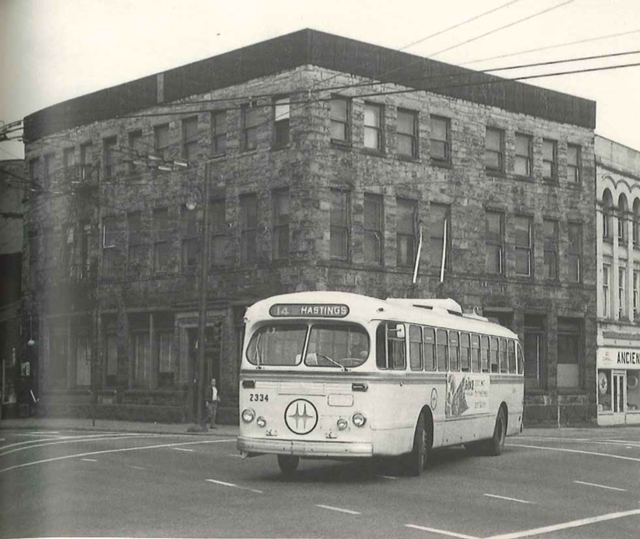
Note: This is a scheduled post as I’m away this week, returning Monday April 11, 2011. If you need to reach TransLink info or staff, see this post!
As part of our April 2011 service changes, we are bringing back the 14 Hastings trolley route—an iconic former bus route that ran through Vancouver’s downtown for many years!
The 14—which even had a famous play named after it—makes its triumphant return to the streets due to optimization changes for the 10 and 17 trolley routes.
Here to tell us more about the 14’s history and its current incarnation is Peter Klitz, one of TransLink’s planners involved in the project. Read on for more insights and some classic photos of the 14 through time!
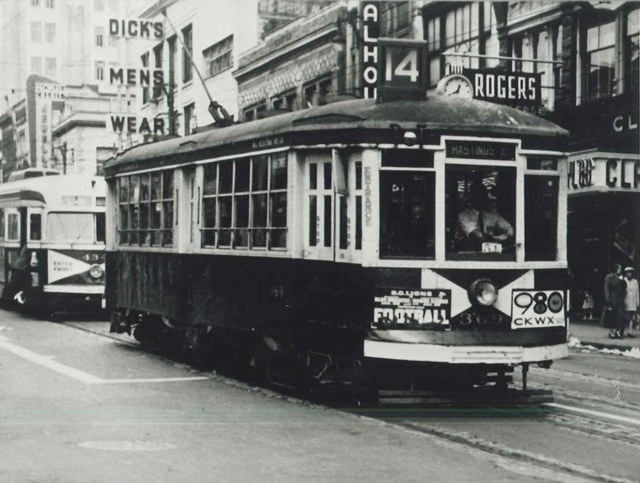
Why is the 14 such an iconic route?
The 14 used to be an old streetcar route that ran along Hastings Street. The street car was discontinued in April 1955 and in June 1955 the trolley bus service started. That’s the era when a number of cities in North America were converting old streetcar routes to bus. In Vancouver we took a different path and converted some of our streetcar routes to overhead-based trolley service on rubber wheels instead of rails. I’m sure some people wished that we had kept the streetcars, but that’s a topic for another day.
The 14 actually ran from 1955 to 1997 when the #14 number was retired. The service wasn’t discontinued, it was just changed to a different route number. But the #14 is forever linked to Hastings Street, which is such an integral corridor in the City of Vancouver. Hastings Street runs along the waterfront where goods were unloaded from ships and transferred to the railway. Because Hastings Street was a streetcar route, it helped shape the development of the city along that corridor. A lot of people travelled on the 14, and it brings back a lot of fond memories of their childhood, growing up in Vancouver as a developing city. That’s probably why it’s so iconic.
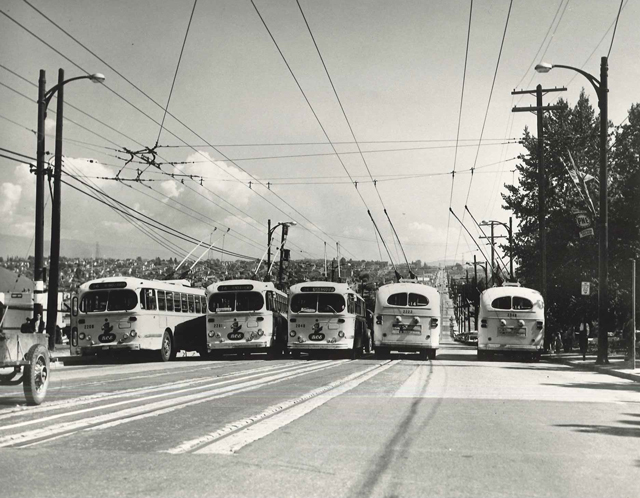
It’s sort of arbitrary what number we put on a bus. So is it safe to assume that there was some advocacy within TransLink or CMBC planning to bring the 14 back?
I think so. Planners have a soft spot for historic bus route numbers. So there was definitely a lot of support when the idea was floated to bring back the old #14.
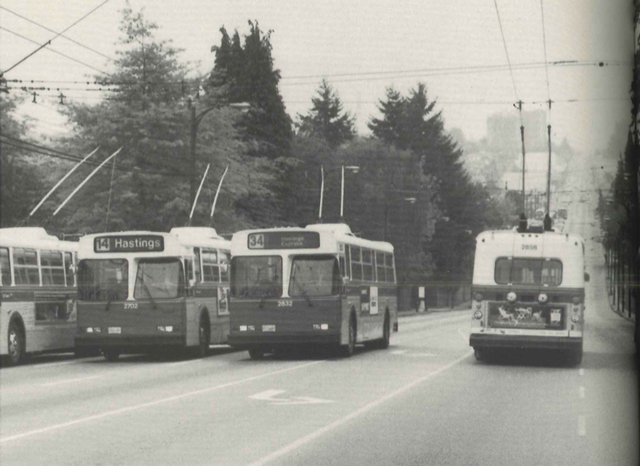
Why is the 14 needed again? Can you talk a bit about the 10 and the 17 routes, and why changes to those routes are required?
Well, every once in a while, we review the performance of our system and look at ways that we can optimize our service. Every corridor in Vancouver generates a different ridership demand, and we endeavour to supply a level of service that meets that demand.
Trolley routes are a little bit unique from diesel bus routes: they are more permanent because of the overhead trolley infrastructure. They are also less flexible in terms of interlining, the linking of one route with a different route. Diesel buses are much more flexible—a diesel bus can come into an exchange from one route and leave as another. At UBC, for example, a bus can come in as a 99 B-Line and leave as a 44 Downtown or a 43 Joyce Station. But with trolley routes an interline is more permanent, almost like a marriage between two corridors in a city. In some cases, that pairing lasts for a really long time and in some cases we take a look and that see that the ridership isn’t well between the corridors anymore. So we look and see if there’s any other corridors in the city that are a better match.
In this case, with the change in travel patterns that resulted from the introduction of the Canada Line, we took a closer at the trolley routes in the city and saw that the 17 was out of balance. The 17 currently goes all the way from Oak Street, through downtown, on Broadway to UBC and through Hastings, essentially a pairing of the Oak Street corridor and the Broadway corridor to UBC. We recognized that those pairings weren’t really working anymore. We need to provide more service on the Oak Street portion than on the Broadway section, because there’s so much other service on Broadway. The ridership demand was unbalanced. So this adjustment is our way of better matching ridership demand with service levels.
We saw the ridership demand on Hastings matched well with the demand on Broadway to UBC. So Hastings St has been hooked up to UBC. All the services that exist today still continue to operate, and that route pairing will be known as the 14. The 17 stays on Oak Street, the 10 stays on Granville Street and everyone gets a service level that matches ridership. This also helps simplify the network, for customer legibility, so people can understand the individual routes and overall network better.
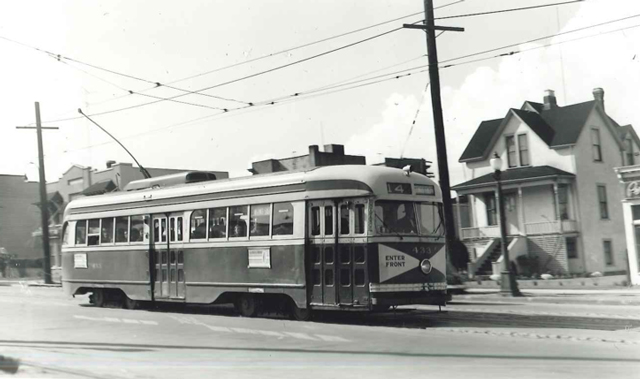
Does the 14 take in a bit of the historic 14 route?
Absolutely. The new #14 will operate on Hastings Street from Downtown to Kootenay Loop, same as it used to in the past. It follows the same trolley wires the old #14 did.
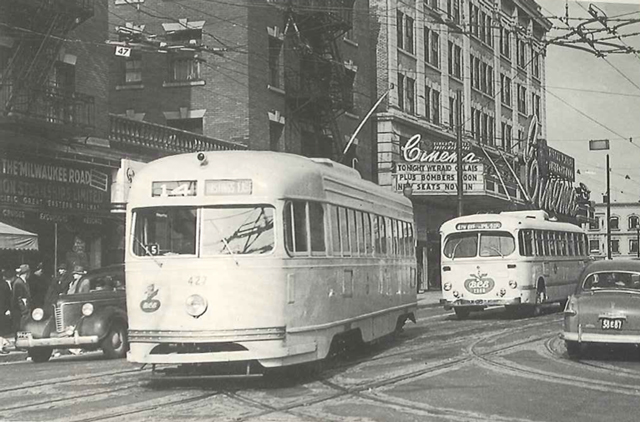
How do you personally feel about seeing the 14 back on the streets? Do you have any personal experience with the route?
I think it’s great. I never drove the 14, it was discontinued before my time, but I pulled many trips on Hastings Street in my days as a transit operator. I have a love for history, and it’s such a historic, iconic route, one of the oldest trolley routes in the system. I think, whenever possible, we should celebrate the history of our city and remind ourselves of how we’ve grown.
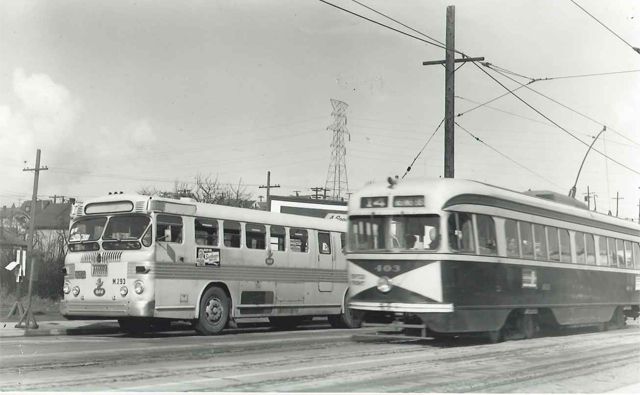
And last but not least, because I’m sure someone wants to know: what about the 34 Hastings Express, which is another historic route that used to run on Hastings Street? What are the odds of that coming back?
I don’t know if we’re going to be able to bring that one back. It was an express route and used the express wires on Hastings Street, but I think we’re probably going to go in a different direction and any express service or limited stop service in the future will probably be a B-Line type service. Right now we have the 135, they provide a limited stop service with articulated buses on that corridor. I think the next step in the evolution of the service would be some sort of B-Line and then maybe some rapid transit. But that’s also a topic for another discussion.
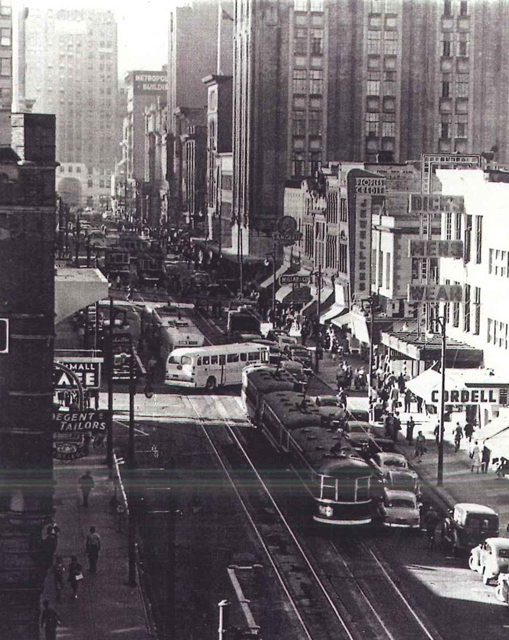
And what’s the difference between a B-Line and a limited stop service?
Limited stop service is really just a specific stopping procedure; those services could operate anywhere with a wide variety of service levels, hours of operation and vehicle types. A B-Line, however, is more of a service brand. People have an expectation that B-Line service will be above and beyond regular services with respect to frequency, capacity and extended hours of operation. B-Lines operate on our busiest corridors and are often a precursor to rapid transit, for example the 98 B-Line/Canada Line, the 97 B-Line/Evergreen Line, and the 99 B-Line/future rapid transit on the Broadway corridor. They also often have some sort of transit priority measures to help with speed and reliability. I think there’s still a lot of life left in the B-Line brand. It’s very recognizable within our region. Right now we’re working on bringing B-Line service to the South of Fraser, on King George Boulevard, for example.
Thanks so much Peter!






When I hear about surface rail options along Broadway…. I often think how can this be done? Is there enough space? Looking at the picture above at Hamilton and Hastings, we can see it can be done. Then again, car ownership is much higher today than in the past. Commercial loading zones also complicate matters.
Great interview and even greater photos! Thanks for this!
Great interview; thanks for the insights, Peter!
That photo from the 1980s is actually a re-creation of that iconic 1955 five trolleys on Hastings; as posted above, it doesn’t show all five. It would be great to have those two photos in this post as an impressive historical comparison.
And I for one would love to see the express wires used again in some form.
One of my transit daydreams has been imagining the express trolley wires on Hastings being extended all the way to SFU for running the 135. This would allow the 135 to better climb the hill at Kootenay, around Capitol Hill (especially for busses starting at the Delta or Kensington stops), and up Burnaby Mountain. Does anyone else share this dream?
I’ve imagined trolley wires extended from Boundary Loop to Brentwood mall… Connecting the #9 service directly with Brentwood Exchange… Long overdue…
I read that the 17 Downtown at Broadway W and Arbutus will be out of service in place for this bus. The 17 is my main transportation of getting from this location to Granville and Davie St on my way home, and on my way to work vise-versa. How will this affect my community after the changes?
I’ve always imagined that several routes in Burnaby should be converted to trolleybus service.
9 to Brentwood (with service line from Lougheed to Hastings so the 9 and 14 can be run out of the Burnaby depot as well)
135 to SFU – Burnaby Parkway hill
130 from Metrotown to Hastings – Willingdon hill (Connecting 9, 19, 135)
145 from SFU to Production Way – Gaglardi hill (Not so much with the gondola idea in the air)
19 to New Westminster Station – 6th Street hill (Replace 106)
Unfortunately retrofitting the Burnaby bus depot and installing heavy poles along all these routes would cost a fortune. The cost of heavy poles was cited as a reason the 15 trolleybus was discontinued.
Still, one can dream…
Just want to point out again that the N17 should be renamed N14 to avoid confusion among late night partiers. =]
Sean, have you ever driven the 9 into Boundary Loop? I imagine the left turn there takes a little “aggressiveness” to get through even when Lougheed westbound has the red light at Boundary. (Though the MVA has you covered there, oncoming traffic has to yield to you, the left turner, provided you started the turn with sufficient distance, though this isn’t something I’m in the habit of practising, heh)
It would be so simple to route it straight, then left at Gilmore ,right at Douglas, and left at Dawson with a little right lane queue jump at Willingdon.
When planners come up with routes, one thing they try to eliminate are unprotected left turns. They’re dangerous, can throw a bus off schedule, and the acceleration needed for a tight turn to give all the other vehicles a ‘buffer’ can make passengers uncomfortable. I can’t think of too many routes that make such turns off busy roads; the 130 does it when it short turns before Hastings.
Then, the same in the reverse direction. There’s a bunch of little shops and department stores as well as a seniors centre that could all benefit from even closer, right to your door service.
I suppose route 109 was a failed experiment in this regard, but things have changed. The area’s densified; it’s no longer just Brentwood Mall, but Brentwood Town Centre!
And it’s a shame about not having the lines extended past Kootenay Loop in Vancouver. Just imagine a 14 Hastings finishing its trip at the stop behind the Safeway on Willingdon! And the 34 or 135 climbing Burnaby Mountain. With the regenerative braking on the newer buses, I’m sure the buses would go through much less wear and tear.
Hell, has anyone even made a proper comparison between the trolleybus and the gondola? Somehow, it’s got to be cheaper and less intrusive running wires and using tri-articulated trolleybuses for SFU.
I think the original plan for the Kootenay loop location was because it was a major transportation hub with Hwy 1 intersecting Hastings and the Park N’ Ride lots (PNE off season) prior to the 90’s. I wonder if that’s why we have three sets of trolley lines Westbound along that Hastings segment. In the old days, I think there was also a #2 Park ‘n Ride route that shadowed the #34.
Philip:
Yes, the 14 Hastings (14 Downtown in the evenings) will take you downtown from Broadway and Arbutus…as will the 16 29th Ave Station.
Cliff:
There was a shuttle bus (59 Lougheed) between Boundary and Brentwood since the 1960s…in the ’70s, they planned to extend the wires to Brentwood Mall, but somehow, it never panned out. By this time, the route had been redesignated the 9 Broadway Extension…then became the 109. Once the 99 B-Line to Lougheed Mall came along, the 109 was redundant.
Now that the 99 is gone (and without a convenient connection to SkyTrain from Boundary except via the #28), an extension to Brentwood would be great, but…it takes money.
;-):
Kootenay Loop has been a transit terminus since around 1950, ten years before the freeway even. Before that, streetcars had turned around on Hastings at Boundary (with Y-shaped tracks to support a 3-point turn into the median on the north side of Hastings).
Around 1949, BC Electric acquired Neville Transportation, which operated an extensive bus network in North Burnaby…so Kootenay Loop became the transit exchange between the Vancouver and Burnaby routes. It was a busy place for decades, with buses pulling in and out all the time.
It remained that way until 1997, when the Hastings Express trolleybus route was replaced by an extension of the #135 bus to Downtown (and Stanley Park until 2003), which had previously terminated at Kootenay Loop. (The 120 Canada Way was a limited-stop service to Downtown, and was replaced at the same time by the #123, which augmented the 135 service.) With the opening of the Millennium Line in 202, a number of other routes changed as well, of course. So now, Kootenay Loop is like a ghost town…a relic of glory days long past.
The extra wires on Hastings ran westbound from Cassiar to Renfrew, and had originally been used as a layover for PNE special buses. They were removed when the Cassiar Tunnel was built in the early ’90s.
And you’re right about the #2 PNE Park & Ride. The 2 blocks south of Hastings from Windermere to Cassiar were a big Park and Ride lot, and the #2 ran from there non-stop to Hastings & Main (like the Hastings Express from Kootenay Loop) during peak hours, from around 1970 until 1997. The #2 was discontinued at the same time as the Hastings Express, replaced by the new pick-up/drop-off service at Windermere provided by the 123 and 135.
The Millennium Line opened in 2002, not A.D. 202.
I don’t think I knew that Vancouver had used PCCs – nice to see some pictures of them!
Cliff: You’re right, Simon Fraser would make a great trolleybus route. From all the noise and rattling, those diesel buses are obviously working quite hard, and probably using a good bit of fuel too. Trolleybuses have always been one of the best forms of transport for getting up hills, because they combine electric traction with grippy rubber tyres. If the gondola idea goes further they should definitely be comparing it against the costs and benefits of extending the trolley wire.
Yup, though a couple considerations need to be taken into mind.
Going out to SFU and then down to Production Way Station… That’s one heck of a long deadhead for a trolleybus leaving Marpole or Production Way. But if we were to put aside the cost of even half of such an idea, it’s still ridiculously expensive. Just imagine the cost for an overhaul for the Burnaby bus depot, let alone all those heavy poles running from Hastings to to SFU and down to Lougheed again.
Trolleybuses my run cheaper and this is what they were built to do, but installation is not cheap. Besides, people are all in awe of the gondola. It’s new, it’s flashy. Even I think it’s neat. But these trolleybuses are worth taking a look at too!
Trolleybus facilities would need to installed at the Burnaby Depot and a reasonable number of routes need to be taken over by that depot to justify its use. The three easiest short term routes I see for this would be the 9 Boundary and the 14 Hastings as the lines need to be extended only one kilometre or so (And would allow better connections by having the 9 terminate at Kootenay Loop instead of Boundary-the middle of nowhere. This arrangement with the 9 and 14 would also bring any deadheading to near 0 for these routes. A route planners dream!
This along with the 135(34) and 145(15?) would bring four of the most used routes in the region to this depot as trolleybuses, leaving Marpole and Oak depots free to deal with their other trolley routes: 3, 5, 6, 7, 8, 10, 16, 17.
And the 4 and 20 for that list of Vancouver routes of course! :p
Though the 16 could also be moved to the Burnaby Depot for shorter deadheads as well come to think of it.
The new #17 will be great! Much better reliability for Oak Street!
Now only to do something with the Arbutus portion of the #16! Perhaps marry that up with the Oak Street run, and have the Hastings/Renfrew portion of the #16 run on its own?
(feels nostalgic about PCC cars even though he hasn’t ridden one before)
I always wondered why all of the original trolley bus routes never went into Burnaby – particularly 14 Hastings ?
[…] a Senior Planner at TransLink, talking about optimization work on the transit system. (We did an interview with Peter about the 14 last […]
Why were they called the Presidents Conference Cars above?
Which or what presidents? What did they do and who were they?
Bill: more answers about the PCC car than I could ever imagine exist over at Wikipedia. http://en.wikipedia.org/wiki/PCC_streetcar